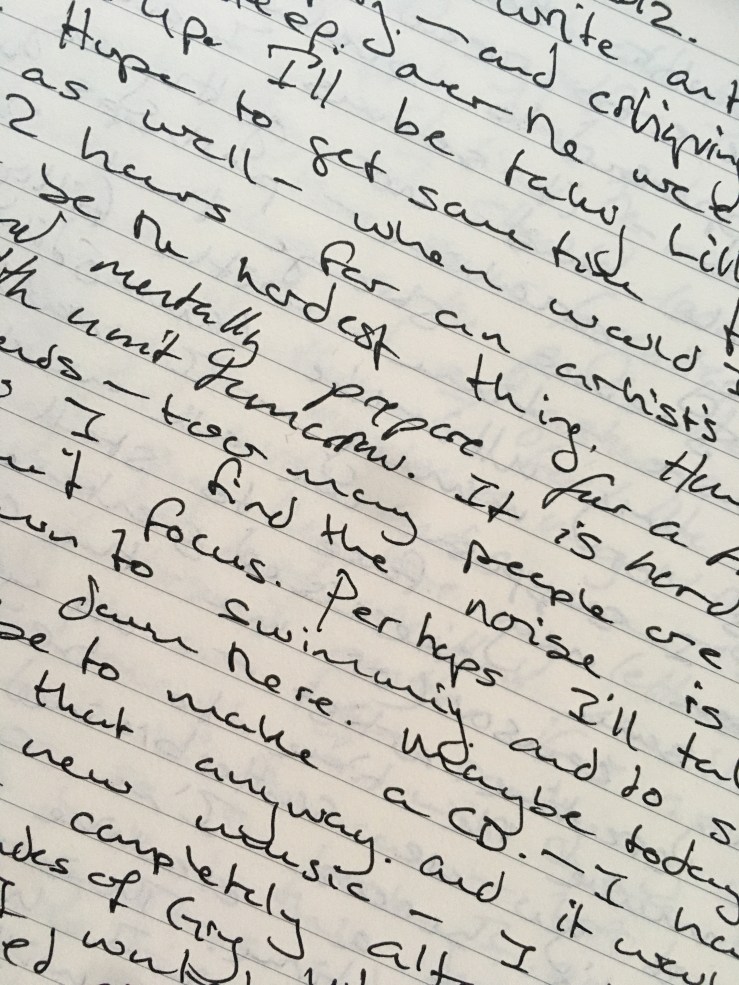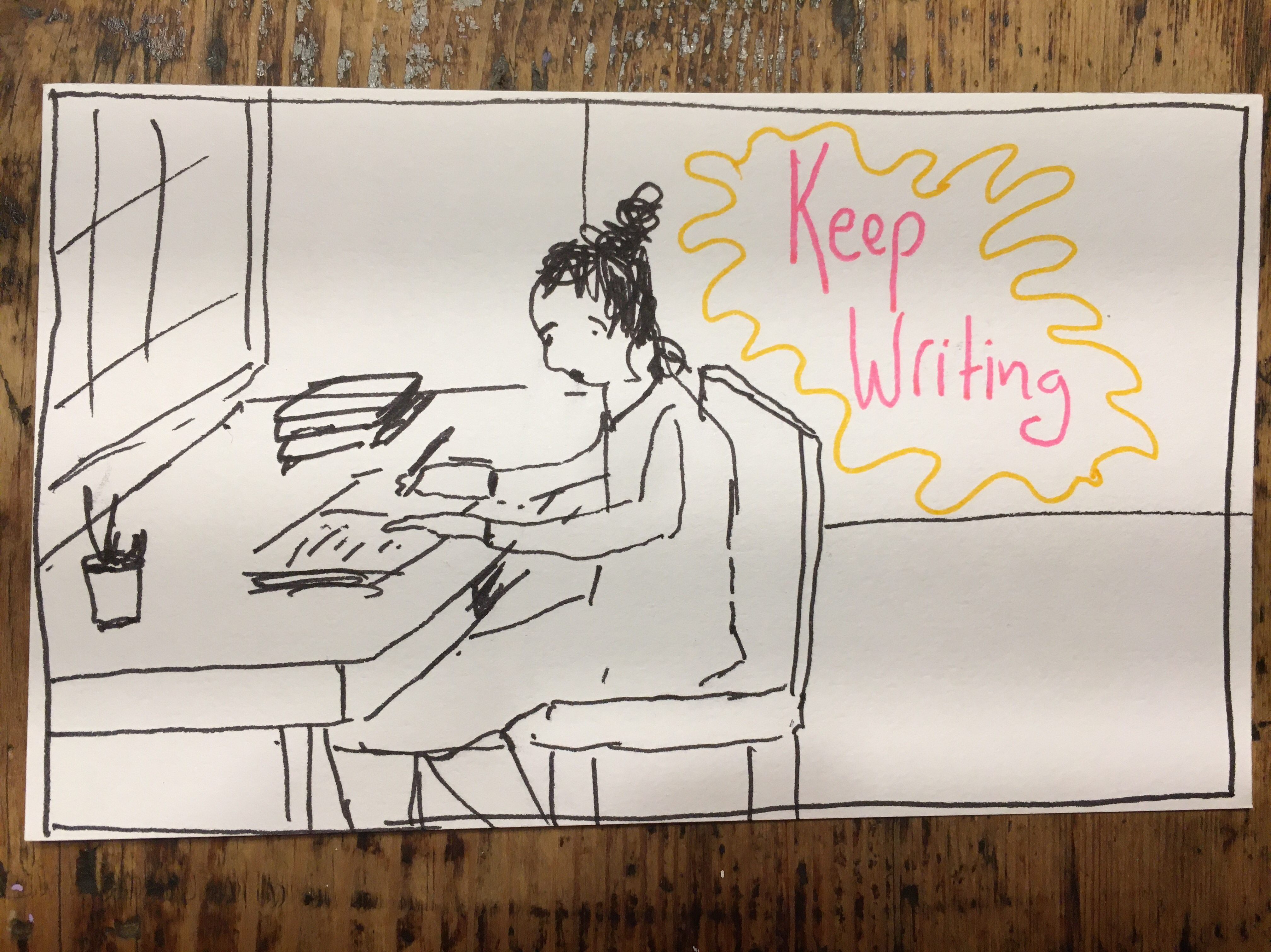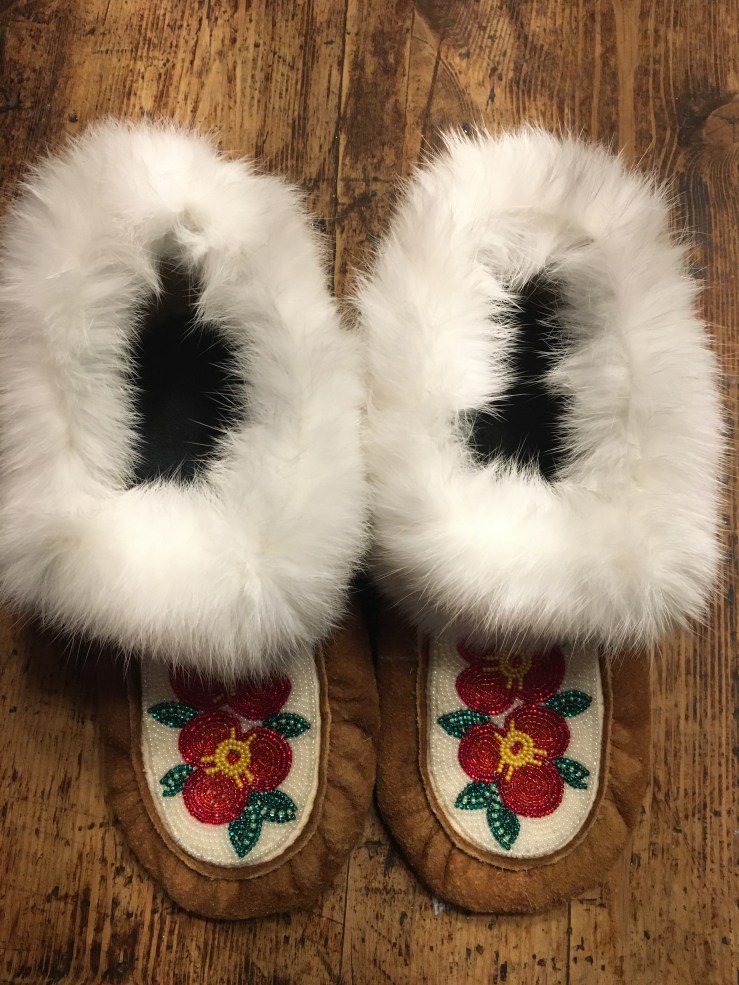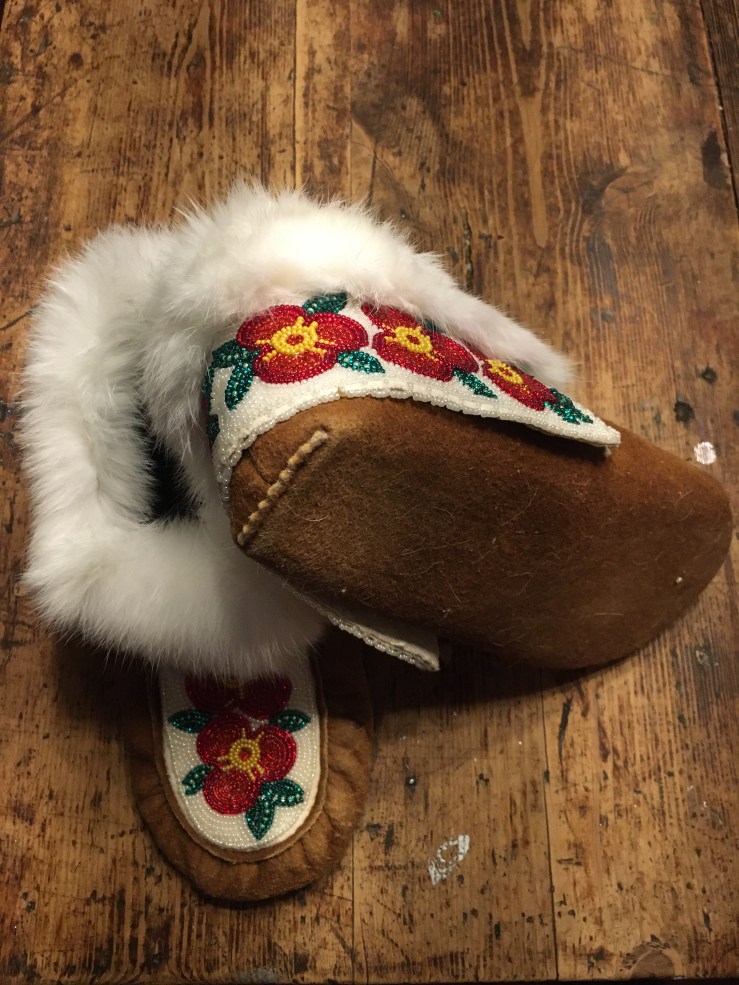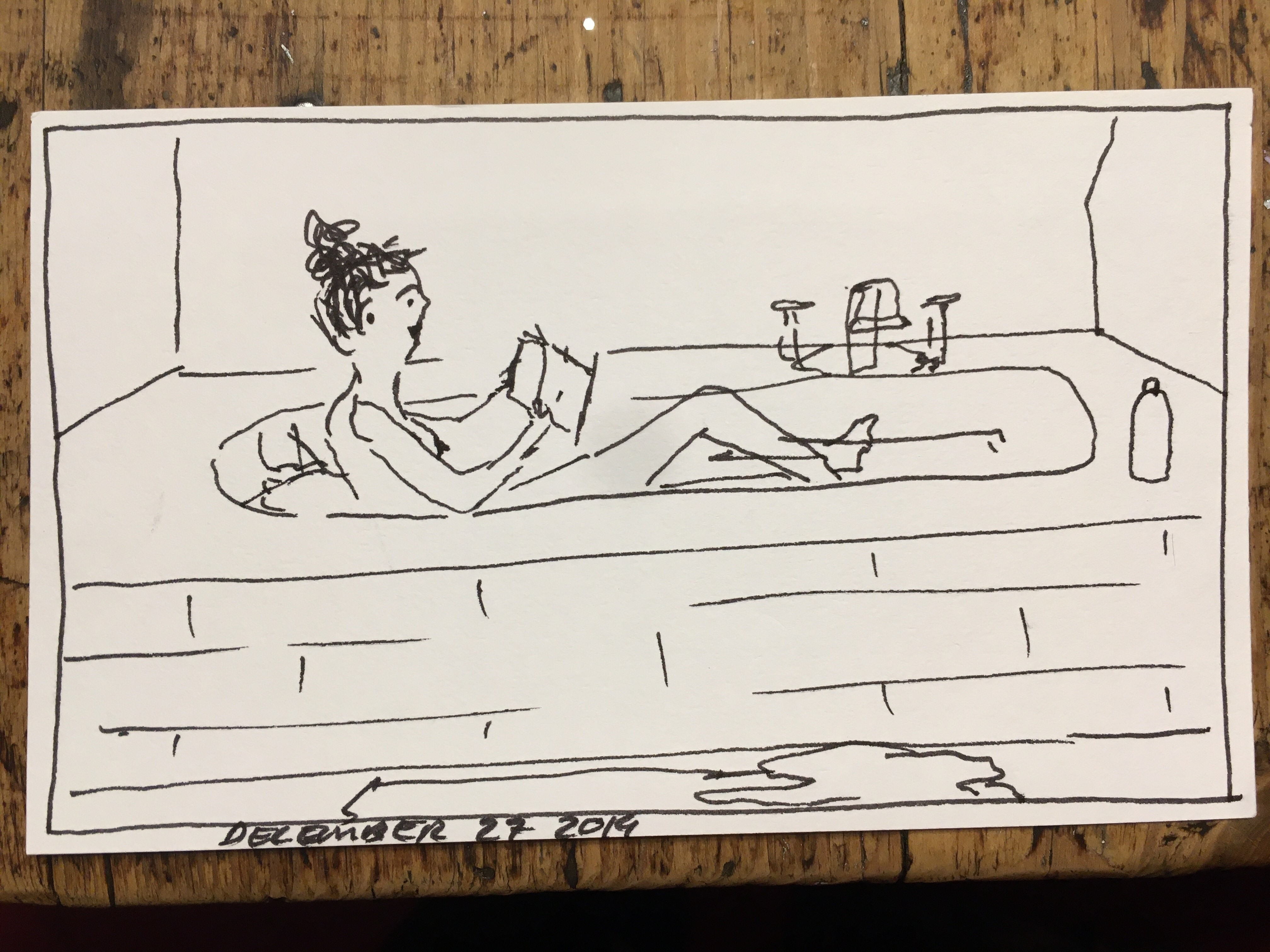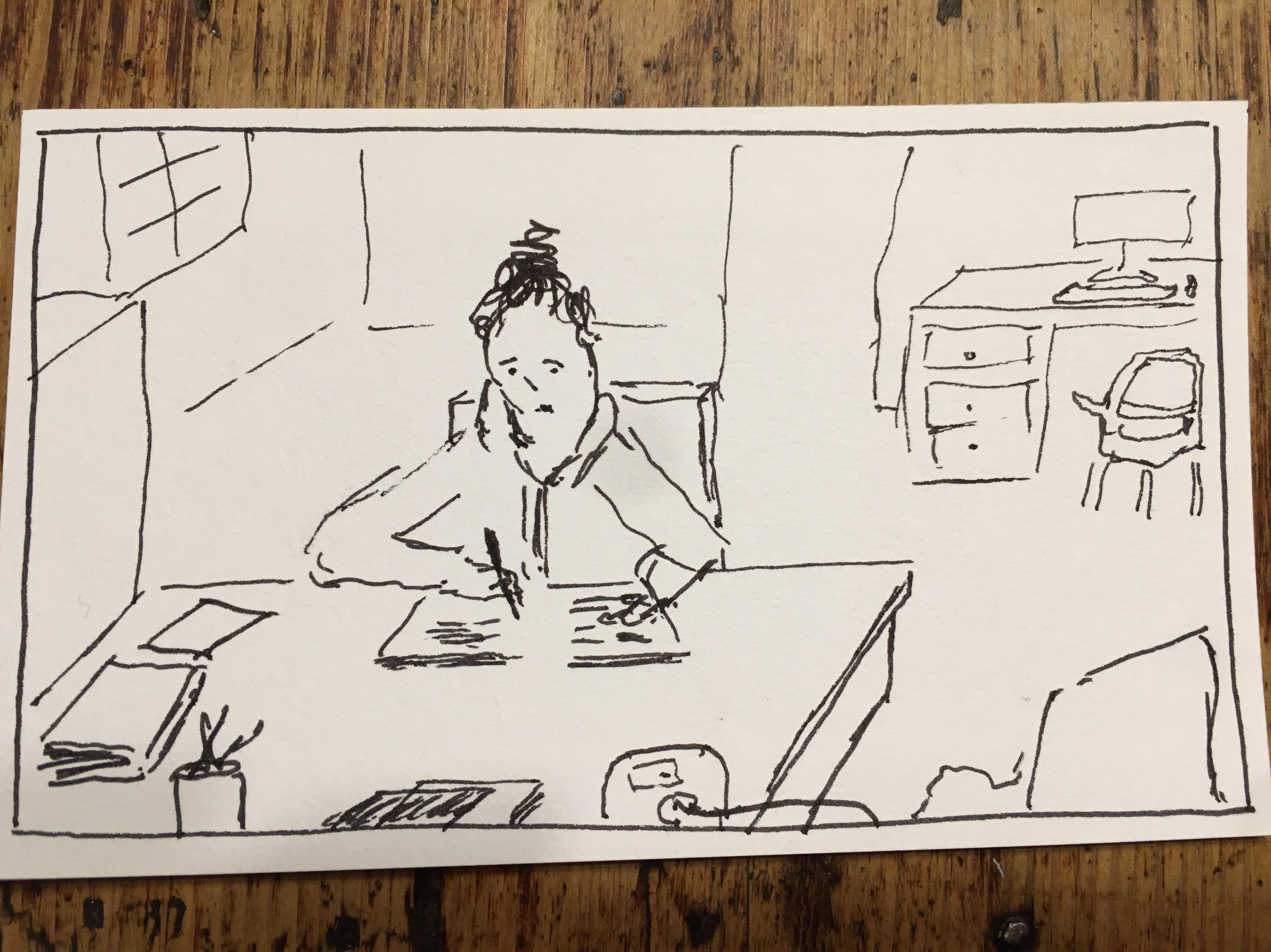
I like to write by hand. It took a while to build up the muscles in my fingers and my hand when I first started out because different muscles are being used compared to typing on a keyboard. I was never very fast on keyboards anyway. When I first started writing seriously, in a notebook, my hand cramped and the letters were large and loopy. Still, legible.
In high school, when my friends signed up for typing class (in those days it was on a typewriter), my father, who rarely weighed in on such matters, ordered: you will not take typing, you will take law. Turns out you can teach yourself to type fairly quickly…but it looks ugly…and I stare at the letter keys instead of the screen, dancing my hands backwards and forwards in what I’m sure is a most inefficient pattern. Ah well.
Writing by hand is freeing in a way that typing on a keyboard isn’t. A screen is a bordered two-dimensional space, whereas working with a physical page of paper, though still flat, I can draw arrows and pictures and write sideways or backwards or upside down, cramming words into a tiny shape in a margin, or expanding letters into a material emphasis. And there’s the advantage of seeing your progress: the pages slowly fill, front to back, and a page becomes a pile of pages and soon, a filled notebook. It’s satisfying in a way that an icon of a file on your desktop could never be.
But there’s another distinction I don’t quite understand, and it’s instinctual: writing by hand helps me to think differently as I create. It’s as if my thinking is more three (even four?) dimensional. On the computer, the sentences wind one after another linearly. And the delete key gets more of a workout than my penned cross-outs. I’m more forgiving of my “wrong direction thoughts” when I write by hand. But that’s good, because often there’s something bubbling up from the subconscious when we write, and it might appear in the margins or beneath a cross-out line but can never recover the fatal depression of the delete key.
Writing by hand is similar to drawing in many ways.
Writing by hand matches the speed of my thoughts…I can transcribe my thinking more easily by hand.
My husband’s uncle wrote a number of books, all by hand (transcription services were expensive, so one didn’t waste the money on a product that wasn’t quite finished). He used a large room and placed his handwritten papers on tables around the room, physically shuffled them from corner to corner and often used scissors to cut and stick paragraphs into place with scotch tape. I wonder if this physical immersion in one’s work enables you to know your work, your process and your progress differently. Only one way to find out I guess…
William Faulkner disregarded his wife’s wishes and outlined his novel, A Fable (1954), on the walls of his study, handwriting directly on the paint!
Here’s a picture of Joseph Heller’s handwritten outline of his novel Catch 22.

